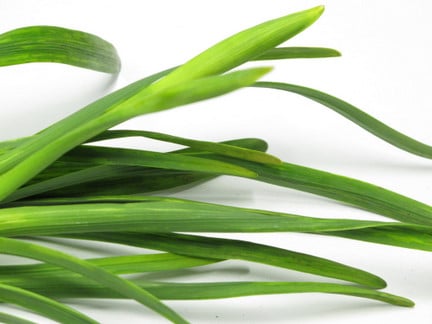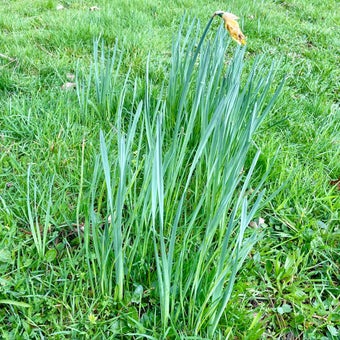
Quick facts
Common name - Daffodil viruses
Scientific name - Narcissus yellow stripe virus and others
Plants affected - Narcissus (daffodils)
Main symptoms - Yellow streaked leaves, lack of vigour, leaf and stem distortion
Caused by - Viruses
What are daffodil viruses?
Infections by Narcissus yellow stripe virus and other viruses usually do not kill plants, but cause a loss of vigour and a wide variety of discolourations and distortions. This is most commonly seen when the foliage is growing in spring and early summer.
Narcissus yellow stripe virus infects daffodils and jonquils. Other common viruses are Narcissus white streak virus (limited to N. tazetta types), and Cucumber mosaic virus, which usually goes undetected, but causes lack of vigour.
Symptoms
You may see the following symptoms:
- The most common daffodil virus, Narcissus yellow stripe virus, causes yellow streaks down the leaves of daffodils and jonquils. These become progressively more pronounced as the leaves lengthen
Other symptoms of this and other viruses include:
- Lack of vigour
- Flower ‘breaking’ (white flecks and streaks) – not to be confused with bicoloured flowers
- White, coalescing streaks on the leaves
- Distorted stems and leaves
N.B. Leaf distortion, yellowing and a reduction in vigour can also occur as a result of infestation by stem and bulb nematodes, but the nematodes will also cause small, pale swellings (known as spickels) on the leaves and a characteristic pattern of browning within the bulb.
Control
Non-chemical control
- Gardeners should minimise the risk of virus infection in daffodils and other Narcissus species by seeking virus-free stock. Plants with suspicious symptoms should be destroyed, there are no cures for plant viruses
- Planting on fresh sites where Narcissus have not been grown previously will slightly reduce the risk of nematode-transmitted viruses, although nematodes have very wide host ranges
- Newer cultivars are less likely to be affected than old ones
Chemical control
There are no chemical controls. The use of insecticides to reduce aphid transmission is not practical.
Biology
Plant viruses are extremely minute and consist of a protein coat and a core of nucleic acid. They have no means of self-dispersal, but rely on various vectors to transmit them from infected to healthy plants. Once viruses penetrate into the plant cells they take over the cells’ nucleic acid and protein synthesis systems and ‘hijack’ them to produce more virus.
Viruses are frequently transmitted through propagated material but, depending on the virus, can also be transmitted via insect or mite vectors, pollen, mechanical transfer via contaminated hands and tools, or nematode vectors in the soil. Some viruses can be transmitted via seed, but generally these are a minority and therefore seed propagation is often a useful way to ensure virus free plant material.
Viruses are commonly found and transmitted in bulb plants which are multiplied via vegetative propagation year after year. As such, there is a much greater risk of virus infection levels building up. This is particularly the case for older Narcissus cultivars. Where cross-pollination techniques have been used to breed new cultivars, these are less likely to be affected.
Once in the plant, Narcissus yellow stripe virus and several other Narcissus viruses can be aphid-transmitted. Aphids do not breed on daffodils, but winged forms do visit and feed and can therefore transmit viruses. Narcissus species are also affected by several viruses that are vectored by plant parasitic nematodes (eelworms) which live in the soil. One of the more important viruses of this type is Arabis mosaic virus, but this is hard to detect without specialist techniques because the symptom is simply a lack of vigour.





